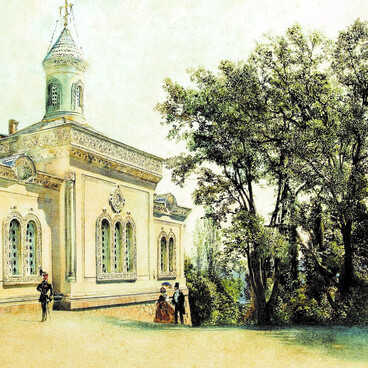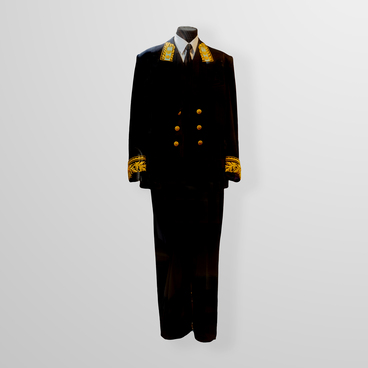The overcoat, which is on display in the Livadia PalaceMuseum, is the uniform of the Soviet diplomat Ivan Mikhailovich Maisky, donated to the museum by his widow in December 1982.
Ivan Mikhailovich Maisky was a participant of the Yalta Conference as Deputy People’s Commissar of Foreign Affairs of the USSR Vyacheslav Mikhailovich Molotov. Previously, Maisky was one of the initiators to create a special uniform for Soviet diplomats. Back in 1930, while he was working as ambassador to London, Maisky wrote to the Collegium of the National Commissariat for Foreign Affairs about the need to introduce a diplomatic uniform. But it was introduced only during the Great Patriotic War as part of the general measures to introduce new uniforms and insignia in the Armed Forces and state institutions.
The Decree of the Presidium of the Supreme Soviet of the USSR of May 28, 1943 established the personal diplomatic ranks for the diplomatic staff of the People’s Commissariat for Foreign Affairs: ambassador extraordinary and plenipotentiary, first and second class councilors, first and second class first secretaries, first and second class second secretaries, third secretaries and attachés. On the same day the Decree of the Council of People’s Commissars of the USSR introduced parade and service uniforms for diplomatic staff of the People’s Commissariat, as well as for diplomatic staff of embassies and missions abroad.
The parade coat of Ivan Mikhailovich Maisky is part of an incomplete set of parade diplomatic uniform of the 1940s–1950s. It is made of black cloth and has yellow mwtal buttons. The insignia of the overcoat are blue buttonholes on the collars. The buttonhole is a rectangle of green color, 30×65 millimeters with a golden edging, sewed in with gilded embroidery. The buttonhole bears the coat of arms of the USSR and a star, which indicated that the uniform belonged to the Ambassador Extraordinary and Plenipotentiary of the Soviet Union. Above the coat of arms are two crossed palm branches. In addition to the coat, the uniform included a tunic or jacket, pants, shirt, tie, vest, boots, gloves and cap, but they are not included in the set on display at the museum.
Ivan Mikhailovich Maisky was a participant of the Yalta Conference as Deputy People’s Commissar of Foreign Affairs of the USSR Vyacheslav Mikhailovich Molotov. Previously, Maisky was one of the initiators to create a special uniform for Soviet diplomats. Back in 1930, while he was working as ambassador to London, Maisky wrote to the Collegium of the National Commissariat for Foreign Affairs about the need to introduce a diplomatic uniform. But it was introduced only during the Great Patriotic War as part of the general measures to introduce new uniforms and insignia in the Armed Forces and state institutions.
The Decree of the Presidium of the Supreme Soviet of the USSR of May 28, 1943 established the personal diplomatic ranks for the diplomatic staff of the People’s Commissariat for Foreign Affairs: ambassador extraordinary and plenipotentiary, first and second class councilors, first and second class first secretaries, first and second class second secretaries, third secretaries and attachés. On the same day the Decree of the Council of People’s Commissars of the USSR introduced parade and service uniforms for diplomatic staff of the People’s Commissariat, as well as for diplomatic staff of embassies and missions abroad.
The parade coat of Ivan Mikhailovich Maisky is part of an incomplete set of parade diplomatic uniform of the 1940s–1950s. It is made of black cloth and has yellow mwtal buttons. The insignia of the overcoat are blue buttonholes on the collars. The buttonhole is a rectangle of green color, 30×65 millimeters with a golden edging, sewed in with gilded embroidery. The buttonhole bears the coat of arms of the USSR and a star, which indicated that the uniform belonged to the Ambassador Extraordinary and Plenipotentiary of the Soviet Union. Above the coat of arms are two crossed palm branches. In addition to the coat, the uniform included a tunic or jacket, pants, shirt, tie, vest, boots, gloves and cap, but they are not included in the set on display at the museum.


